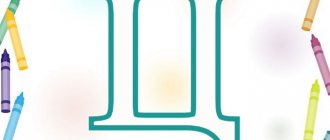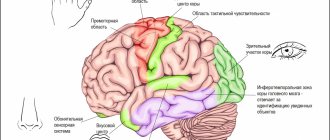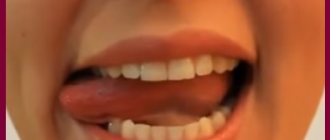SIGNS OF SPEECH DEFECTS
There are certain signs that indicate the possible development of speech defects.
Expressive speech disorder – poor vocabulary, underdeveloped speech, poor perception and memorization of new words, misunderstanding of tense forms of verbs, reticence, use of the same phrases in conversation. In this case, the pronunciation of words can be correct.
Receptive language disorder – lack of interest in conversations. At the same time, the baby has difficulty following directions, often does not understand well what is being said to him, and cannot write or read what is written.
Is it necessary to complete the tasks that the speech therapist gives at home?
All advice from our teachers is advisory in nature. But if you want to get a positive result from classes and make it easier for your child to learn the material, you need to follow the recommendations. Homework is not so voluminous and complex, and not every child is given it, but only those who really need it. After all, sometimes we (parents) rack our brains about what to do with our child and what to do with it. And here you don’t have to ask this question, you will simply follow the teacher’s instructions, for the benefit of you and your baby. To the begining
WHOM TO CONTACT?
Correction of speech defects is carried out by two specialists - a defectologist and a speech therapist.
A speech therapist is a specialist who restores the speech of patients who do not have any deviations in physical and mental health, as well as disorders of the central nervous system.
A defectologist is a doctor who not only teaches how to speak and pronounce sounds correctly, but also deals with the correction of developmental disorders. The task of this specialist includes several tasks - eliminating defects of the speech apparatus, teaching a person to communicate, overcoming barriers and life difficulties.
Special exercises for clarity of diction.
Perform the exercises daily and several times. The room should be comfortable, no strangers, not even animals. It is best to do it comprehensively, that is, today one exercise, and tomorrow another, and then do everything in turn.
"Elephant's trunk" . Extend your lips with a tube as far as possible. Now you need to rotate the resulting “proboscis” several times left and right, clockwise and counterclockwise.
"Smile" . Having stretched your lips as wide as possible, fix them in this position for 7-10 seconds. Then return your lips to their normal position and repeat the exercise several times.
Alternating the two previous exercises. Take your time, take your time and fix your lips in tense and relaxed positions.
"Crossroads" . Here you need to open your mouth, smile, then touch the corners of your mouth with the tip of your tongue, first at the lower teeth, then at the upper teeth.
"Spatula and Needle" . Open your mouth slightly and smile wider. Place your tongue on your lower lip and try to relax it as much as possible. After a few seconds of this position, tense your tongue and use it, figuratively speaking, as a needle: make 5-7 “stabbing” movements with it.
WHAT CAN THE “DOCTOR ZUKOV” CLINIC OFFER IN KURSK?
The Doctor of Sounds clinic in Kursk works in a variety of areas. This includes speech therapy, defectology, speech therapy massage, and early speech development.
Treatment is carried out by qualified specialists with extensive experience. They can find an individual approach to each patient.
Speech therapists from the clinic will not only teach you to speak correctly and clearly, but will also help eliminate speech defects such as allalia, rhinolalia, and dysarthria. If necessary, the person will be assigned special classes (for dysphagia and dyslexia, when there are impairments in mastering reading and writing skills).
Goals of defectology:
- studying children with special needs;
- selection of individual correction techniques;
- training and education of people with psychophysical disabilities.
The speech pathologists at the Doctor of Sounds clinic have the most modern methods and techniques that make it possible to identify speech disorders in early childhood, thereby increasing the chances of special children to improve their quality of life.
Teachers pay attention not only to pronunciation, but also to intonation, grammatical and phonetic components. Classes will expand your vocabulary and develop the ability to speak correctly and coherently. To improve the perception of information, specialists use exciting gaming techniques.
The center employs highly qualified speech therapists-defectologists and oligophrenopedagogues. They conduct classes for children with the following pathologies: developmental delay, visual impairment, hearing impairment, speech impairment, musculoskeletal impairment, mental retardation, and other abnormalities.
For clear pronunciation of sounds, both whistling and hissing.
— In order to eliminate the phenomenon, which is scientifically called sigmatism, it is necessary to “teach” the tongue to be in front, in the interdental space. When pronouncing whistling and hissing words, move the tip of your tongue as far as possible behind the lower incisors. And don’t be confused by the fact that the sound may be even more lisping than usual: when the tongue begins to properly direct the air, the sound will begin to become more similar to “C”.
— More often pronounce the syllables “sya”, “se”, “so”, “su” and the like, the first letter of which is “S”, and the second must be both a soft and a hard vowel. Having consolidated the skill of correct pronunciation of the sound “S”, work on “Z” and “C” in the same way.
BASIC PRINCIPLES OF OPERATION OF THE CENTER IN KURSK
The center practices an individual approach to each patient, personal selection of diagnostic and correction methods. The specialists treat everyone who comes to the clinic with care and very patience, and always provide feedback to the parents of young patients. Parents are also consulted and useful recommendations are selected. After each lesson, a positive result is noticeable.
The network employs real professionals in their field. They have knowledge, skills and experience, therefore, they can provide quality assistance in each specific case.
It is important to understand that effective elimination of speech disorders is very important for every person. After all, it is speech that allows you to find your place in society and achieve certain heights. Every person should have this opportunity. Don’t delay your visit, call, make an appointment for your child and give him a future.
Treatment
Mode
If hesitations in a child’s speech are physiological in nature, it is necessary to organize an optimal general and speech regime: ensure sufficient daytime and night sleep, increase the time of walks in the fresh air. It is important to temporarily limit the flow of new information, minimize watching TV, computer games, and attending public events. In verbal communication, the following recommendations must be followed:
- do not focus the child’s attention on hesitations, do not ask him to repeat the word again;
- talk to the child calmly, quietly, a little slower than usual;
- use short phrases, simple words;
- practice singing, learn age-appropriate poetry with tapping rhythm or marching.
Psychological correction
Indicated for patients with emotional hesitations in speech, stuttering, tachylalia, and polternium. This direction of correctional work helps to reduce fixation on a speech defect, eliminate logophobia, mastery of new self-regulation mechanisms, and expand communication capabilities. The main methods of psychocorrectional work are sessions of psychotherapy and hypnosis, communication training, autogenic training.
Speech therapy correction
Taking into account the reasons underlying speech hesitations, classes are conducted on speech development, stuttering correction, overcoming tachylalia, etc. Logotherapy is aimed at developing a new speech stereotype and consolidating it in all communicative situations. The following methods and techniques are used in the work:
- Articulation gymnastics.
Exercises help strengthen the muscles of the speech apparatus, relieve excessive muscle tension during phonation, make articulatory movements more accurate, and form the necessary kinesthesia. Exercises are used for the muscles of the tongue, lips, palate, and facial muscles. Voice gymnastics promotes the development of voice strength and prosodic components. - Breathing exercises.
Correct speech breathing is the key to free, smooth speech. During the classes, diaphragmatic lower costal breathing is performed. Mastering the technique of speech breathing allows you to pronounce phrases of varying lengths without hesitation or pauses. - Speech therapy rhythm.
Logorhythmic exercises help normalize the tempo and rhythm of speech, synchronize breathing and articulation, and develop general motor skills. Classes are held with musical accompaniment. To practice the rhythm, marching, clapping, and jumping are used. - Classes using ICT.
Computer technologies are widely used in comprehensive work to overcome stuttering. They are based on the effect of biofeedback, help improve the quality and emotional coloring of speech, and eliminate hesitations.
Wellness activities
They are organized on the basis of a clinic or day neurological hospital. The goal is to normalize the regulatory function of the central nervous system and increase adaptation mechanisms. Patients with pathological hesitations in speech are prescribed:
- courses of drug therapy (sedatives, B vitamins, nootropics, anticonvulsants):
- physiotherapeutic procedures (electrophoresis with antispasmodics, electrosleep);
- water procedures (coniferous, carbon dioxide, oxygen baths, recreational swimming);
- massage (general medical, neurosedative, SHV);
- acupuncture;
- physiotherapy.
What materials does the speech therapist use in classes?
The teacher-speech therapist uses the following equipment and inventory during the lesson:
- Speech therapy album, pictures, materials for diagnosing the pronunciation of sounds;
- Mirror;
- Balls, soap bubbles, cotton wool, wind for breathing exercises;
- A set of speech therapy instruments (spatulas, probes, brushes) for producing sounds
- Cards, books, manuals for automating sounds in speech;
- Literature used in the process of speech therapy classes.
- Pencils, markers, albums.
All speech therapy equipment is sanitized every time after use in class. To the begining
Degrees of disorder
Dysarthric disorder is not limited to speech defects. This includes all disorders that are in one way or another associated with pathological innervation or with inadequate functioning of improperly innervated organs. Thus, due to hypotonia or hypertonicity of the tongue, as well as paresis of the soft palate, difficulties appear in the act of swallowing and chewing. Ptyalism is observed - increased salivation. Facial expressions suffer due to a disorder of the innervation of the facial muscles. The inability to move the eyebrows, smile, puff out the cheeks, the face takes on the appearance of a mask.
However, it cannot be said that one patient has all the pathological characteristics. The disease manifests itself depending on the degree of development of the disorder.
A mild degree of dysarthria is accompanied by a reduction in the activity of the articulatory side of speech due to slow movements of the tongue and lips. The speech of such patients is slowed down and lacks forceful expression. Sounds are blurred during pronunciation. It is difficult to pronounce hissing words, voiced consonants do not sound loud enough. The sound of soft consonants is disrupted, as this requires the active participation of the back of the tongue and the soft palate. Swallowing is practically unimpaired.
With an average degree, a significant modification of speech is already observed. She becomes inarticulate and very quiet. Even defects in the pronunciation of consonants appear. Voiced consonants are replaced by voiceless ones. The endings are swallowed. The voice becomes nasal and there is increased nasal exhalation. Characterized by chewing and swallowing disorders. Facial expressions suffer.
Severe severity is characterized by deep lesions of the speech-motor system. As a result, the tongue and lips of such patients are almost completely immobilized, and the face acquires mask-like features. The mouth is always half open due to drooping of the lower jaw. All this makes speech production very difficult, resulting in anarthria - the inability to speak. A person can only make individual sounds. Chewing and swallowing are inaccessible to him.









